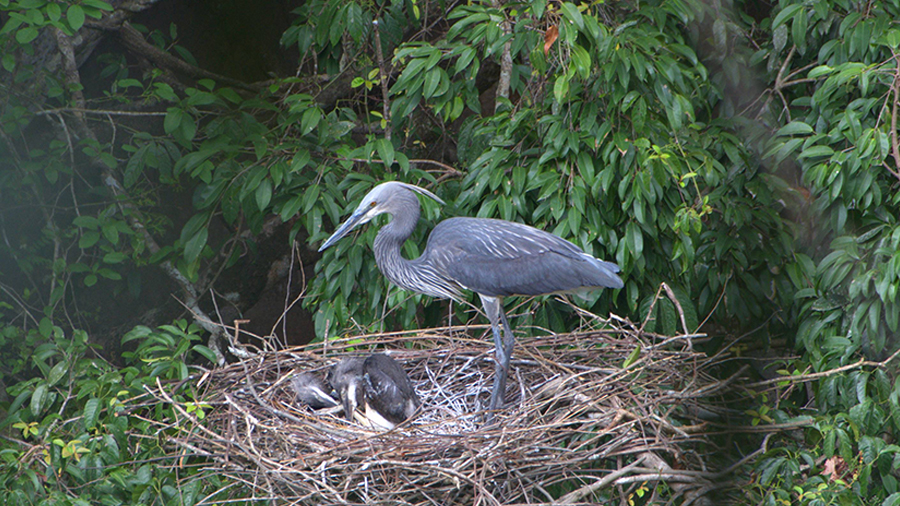 Bhutan has recorded 29 White-bellied Herons in this year’s annual population survey. It is a hopeful rise from 25 birds last year. The Royal Society for Protection of Nature, RSPN, has been conducting the survey since 2003 to track the distribution, population, and threats faced by the iconic and critically endangered species.
Bhutan has recorded 29 White-bellied Herons in this year’s annual population survey. It is a hopeful rise from 25 birds last year. The Royal Society for Protection of Nature, RSPN, has been conducting the survey since 2003 to track the distribution, population, and threats faced by the iconic and critically endangered species.
Elusive and critically endangered, the White-bellied Heron is the second-largest heron in the world. With only an estimated 60 individuals left globally, each bird matters. And this year’s survey indicates that Bhutan is home to half of the global White-bellied Heron population.
From the total, 24 were spotted in the wild this year. And five birds are currently raised at the White-bellied Heron Conservation Center at Changchey in Tsirang.
The RSPN established the conservation breeding center located adjacent to a known wild habitat.
It is part of a long-term effort to preserve genetic diversity, establish a founder population, and eventually reinforce the wild population.
This year, the highest was recorded at the Punatsangchhu river basin with 12 birds, followed by four each from Phibsoo Wildlife Sanctuary, Wangchhu, and Mangdechhu.
However, the survey also revealed declines in historically active areas like Phochhu, Mochhu, and upper Mangdechhu.
Nevertheless, the survey recorded four active nests: three in the Punatsangchhu river basin and one in Mangdechhu river basin.
The presence of the White-bellied Herons indicate that the country’s fresh water eco-system is healthy.
The survey was conducted over five consecutive days, with teams systematically tracking along river stretches to detect the presence of WBHs.
Once distributed across Southeast Asia, the White-bellied Heron is now confirmed only in Bhutan, northeast India, and Myanmar.
To support conservation, the RSPN also runs community-based programmes, from high-yield seeds to sustainable timber and fisheries. These programmes aim to reduce pressure on habitats while uplifting local livelihoods.
As Bhutan deepens its commitment to saving the White-bellied Heron, rare birds may yet have a future in the skies.
Devika Pradhan
Edited by Phub Gyem









